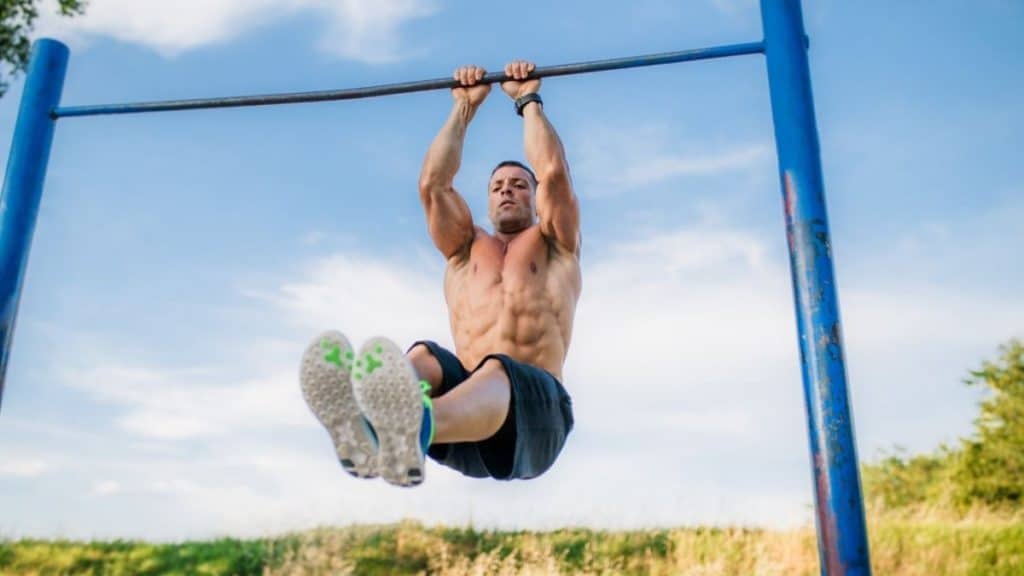
A great part about calisthenics is your workouts will progress as you do. In this article we are going to talk about pull up progressions.
Pull up progressions are different types of pull ups that are related to the pulling motion exercise. The variations allow muscle development in arms, chest and back for overall fitness.
No matter how new you are to calisthenics, or even if you’re a seasoned pro, there is a type of work out that will challenge you.
Take the basic pull up for example. As hard as it may be at first, with some consistency and dedication, 10-20 reps per workout should come eventually. Your muscles will adapt, and grow, and be able to accommodate.
But where do you go from there? Doing the basic pull up can be a viable way of working out. And it is for many. But with calisthenics, when you’re consistently increasing your repetitions higher and higher. Its generally a good sign that you are ready for the next level and to progress.
There are levels of pull ups that can be performed by any individual depending on which level they are comfortable with.
Let’s look at some of the ways you can progress your pull up workouts.
| Pull Up Progression Exercises | How many repetitions in perfect form before going on to the next progressions | |
| Australian Pull Ups | 15 Repetitions | |
| Negative Pull Ups | 15 Repetitions | |
| Regular Pull Ups | 15 Repetitions | |
| L-Sit Pull Ups | 10 Repetitions | |
| Inverted Row Pull Ups | 10 Repetitions | |
| Archer Pull Ups | 10 Repetitions | |
| High Pull Ups | 10 Repetitions | |
| High L-Sit Pull Ups | 10 Repetitions | |
| Negative One Arm Pull Ups | 5 Repetitions | |
| One Arm Pull Ups | 5 Repetitions |
Pull Up Progressions From Beginner To Advanced
We are going to take a look at a few pull up variations that are a good range for anyone starting out to avid fitness enthusiasts. As you get higher in your progressions the weighted overload in your workouts will increase as well as the requirement for more body control.
To prevent any injury and also to help you on your path of success with these workouts. It’s better to start at a level where you already feel comfortable or start from the beginning and begin mastering the different levels available.
Beginner Pull Up Progressions
Australian Pull Ups
If you’re struggling to make consistent pull ups, or you need to work on your form, doing australian pull ups is a good exercise to build that skill.
This exercise is typically done on dip bars but you can be done between two sturdy chairs or another surface where you can hang and pull from comfortably with your feet touching the ground.
The exercise would start with you holding on to the surface with your feet on the ground and body in an inclined position. To make this exercise harder or easier, simply adjust the angle of the incline. The more inclined you are (closer to the ground) the harder it gets.
Negative Pull Ups
This is a good in between workout from Australian pull ups and performing a regular pull up. And also a source in building the muscles needed to control your body when lowering on the pull up bar.
With negative pull ups we start to introduce your full body weight when doing this exercise. Running through negative pull ups will help give you a feel of a full pull up as well as building the control needed.
Using a pull up bar, you can either hop up and hold at where your highest point of a pull would be. And the exercise would be lowering yourself from that point to the bottom of your pull up range. And then just repeat it.
Pull Ups
With this type of pull up, try aiming to bring your chest to the bar, for it to be considered a full pull up. Many people focus on getting their chin above the bar and stop there in the progressions. Which is fine, but aiming to get your chest to the bar, will give you a deeper workout on the muscles.

L-Sit Pull Ups
With this pull up we would be working a lot more on core strength as well as adding weight to a regular pull up.
L-Sit pull ups consist of your legs straight out in front of you as if you were sitting in a L position on the floor. And from the you would perform a regular pull up.
What makes this type of pull up difficult is controlling your lower body with the added weight that is causing the imbalance. As opposed to with your lower half hanging which below you and all you really need to do is pull.
Intermediate Pull Up Progressions
Inverted Row Pull Ups
Continuing to build more strength by adding weight and making the pull up motion more difficult. With the inverted row pull up we are targeting the back and hips while making this variation of a pull up.
Similar to the L-Sit we are using the legs to add to this work out. From the L-Sit position we are lifting the legs higher towards the bar until the feet are facing the ceiling and your back is towards the ground.
From here you can perform the pull up exercise, being sure to engage your back and hips when doing so.
Archer Pull Ups
The movement with the archer pull up is the same idea as the push up counter part. Our purpose here is to add extra weight as well as giving practice to one arm being able to manage your body weight.
To perform this pull up, you would set up with your arms slightly wider then shoulder length with a tight grip on the bar. Proceed to pull up with one arm using the other arm for minimal assistance and more for stabilization.
When done correctly, at the height of your pull up your arms should make a shape similar to that of a check mark.
High Pull Ups
If you thought pulling to your chest was high, well then this type of pull up is going to challenge you even further.
The high pull up is going to require you to bring in a mix of all the previous style of pull ups ( which should have been able to make you pull harder ). The goal of this exercise is to consistently be able to perform a pull up that reaches your abdomen.
Advanced Pull Up Progressions
High L-Sit Pull Ups
A progressions from a regular L-Sit pull up mixed with High Pull ups. The High L-Sit pull up would require you to make a full L-Sit pull up to your abdomen.
If you are considering to go ahead with this exercise. It should mean you have already mastered all the previous ones leading up to this.
If not, keep going back in the steps and practice with the other pull up variations.
Negative One Arm Pull Up
A stepping stone before going on to the last progression. Beginner or not, you should really not move on any further until you mastered this step. Negative one arm pull ups really will help set the stage if you’re goal is to be able to perform a one arm pull up.
To do this, you would perform a regular pull up. At the height of your pull up, release one arm and slowly bring your self down. Then repeat the process again and try to remember to alternate arms when doing so.
One Arm Pull Ups
If you’re completely comfortable and confident when performing all previous steps. It could be time for you to tackle the one arm pull up.
Starting at a hanging position you would want to be able to pull up with one arm and have the bar touch your opposite shoulder.
To increase difficulty with this you can try holding a light dumbbell with your opposite hand to give just slightly a little more weight.

Conclusions
Progressing through the different levels takes a lot of dedication and consistency. Realistically, you should at least expect months if not years to progress from beginner to advanced. A lot of it will come down to how effective and how determined you want to be on your level of fitness.
The important thing to note is that you need to master and be completely comfortable with each level of pull up variation before progressing to the next one. This is to properly prepare you body for the next level of stress that each workout brings, and more importantly to minimize the risk of injury.
Source:
Chris Heria: https://www.youtube.com/watch?v=hByjG7mymdw&t=378s

